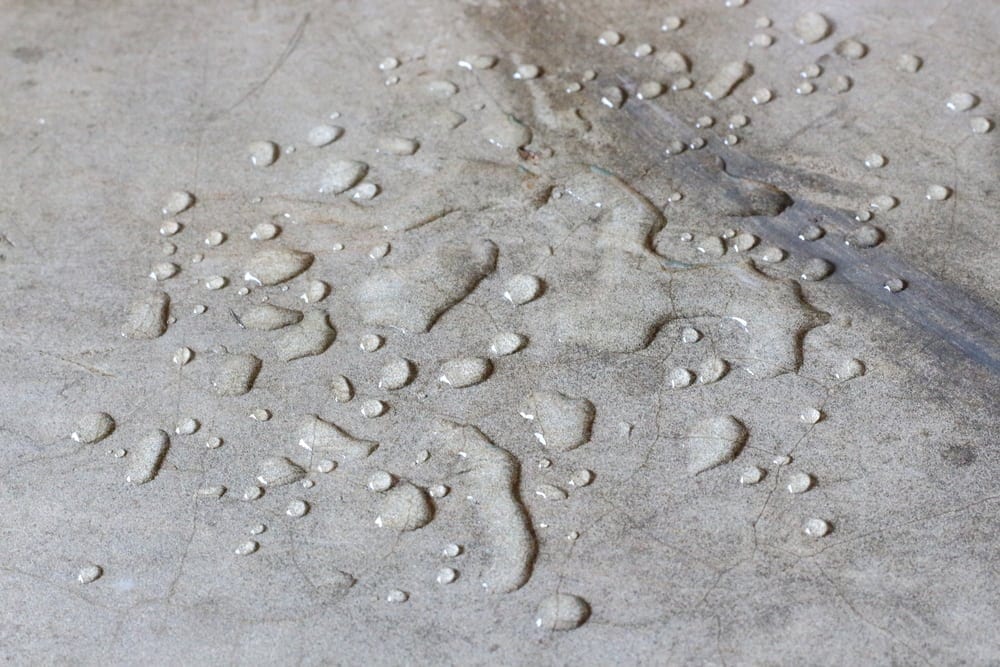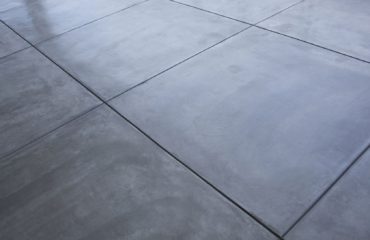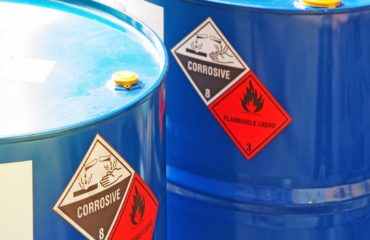All look alike products do not perform the same even though they are making similar claims. How do you know which one to believe?
Sodium Silicates: How do you know which one to believe definitely applies to sodium silicates. Sodium silicate formulas have been around since the 1950’s and were initially used as concrete floor hardeners. Today because of their economical nature many concrete manufacturers and distributors claim sodium silicates to be effective waterproofers. Sodium silicate solutions have a place as a concrete treatment; however, their role should only be limited as concrete surface hardeners. Sodium silicate solutions perform very poorly and ineffective as waterproofing sealers since they have a limited depth of penetration and they are unable to stop or reduce hydrostatic pressure. If you want to densify your concrete a sodium silicate hardener is an excellent option; however, leave the waterproofing to one of the other methods below.
Siliconates: Siliconates are as a highly alkaline aqueous solutions that are used for water-repellent impregnation. After the water has evaporated from the sealer, siliconate reacts with atmospheric carbon dioxide to form a water-repellent surface barrier. Siliconates are good water repellent options with an excellent water bead effect.
Silicate/Siliconates: An effective waterproofing method because of the densification properties of the silicate and the hydrophobic properties of the siliconate. Typically silicates are used to harden and siliconates are used to protect from water and by combining the two a dual action product is created. The silicate component reacts with the concrete by introducing additional silicate that reacts with excess calcium hydroxide to form more CSH. This results in a denser, harder concrete surface. The siliconate applied to the concrete undergoes a two part process in which it first reacts with carbon dioxide in the air to form an active silicone resin. The silicone resin then reacts with calcium hydroxide to form a liquid repellent resin on the concrete surface and within the available capillary pores. Siliconates are sealers, not densifiers and are best used when blended with silicate to provide both densifying and sealing properties. The seal elicited is microscopic and there is no film build up on the surface which means it cannot wear off over time. An excellent option for waterproofing basements and driveways.
Silanes: The main deterioration mechanism for concrete is corrosion and scaling due to deicing products. The most effective solution to protect water and salts from damaging concrete is to use a silane based sealer. Because silanes do not change the skid or slip resistance of concrete they are ideal for driving surfaces (aka driveways, bridges, roadways). Silanes penetrate deep because of their extremely small molecular size and they chemically bond with silica to form a permanent attachment of the water repellent molecule. This creates a deep hydrophobic layer that prevents water and waterborne contaminants from entering the substrate and causing premature deterioration. Silanes leave the surface with a completely invisible finish and elicit a water sheeting effect.
Siloxanes: Siloxanes have a larger size polymer and penetration is not as deep as other sealers. Unlike silanes, which require a high pH to catalyze, siloxanes are not dependent on substrate pH. Because of this, siloxanes are ideal for treating brick, stucco, and stone. Siloxanes are not commonly used as a stand alone products but to maximize their potential they are typically blended with silanes. Used as a stand alone product siloxanes may slightly darken the treated surface while also creating a water beading effect.
Silane/Siloxanes: Silanes and siloxanes are both derived from the silicone family. Despite being very closely related, they have significant performance differences. Because silanes are made up of smaller molecules than siloxanes, they typically will obtain deeper penetration than siloxanes. As a result, silanes perform well under abrasion and weathering conditions. A consequence, however, of this small molecular size is that silanes are relatively volatile. Therefore, the solids content of a silane product should be high enough to compensate for the loss of reactive material through evaporation during application and cure. Siloxanes, because they are less volatile, generally offer good water repellent performance at lower costs. However, for concrete surfaces subjected to abrasive wear, treatment with a silane sealer will provide longer lasting protection. In regard to surface texture and color, treatment with silane sealers typically cannot be detected visually. Siloxane products may slightly darken the treated surface. By using a combination of silanes and siloxanes the benefits of each compensate for the weaknesses of each making for the perfect DIY water repellent sealer. Silane/Siloxane blends are commonly used on driveways, sidewalks and leave the surface with a natural finish.
Elastomeric Coatings: Elastomeric coatings are rubberized emulsions which cure to provide a heavy duty rubber-like membrane for use in waterproofing or damp proofing concrete or masonry surfaces above and below grade. The term elastomeric simply means that the material is flexible. Elastomeric coatings are durable and essentially derivatives of urethanes and polyurethanes formulated into a liquid which can be applied to form a monolithic waterproofing membrane. While elastomeric coatings are impermeable to water, chemical vapors and sub-terrain gases they are at high risk of delamination with a short lifespan. They also alter and change the color, texture and surface appearance of concrete.
Crystalline Waterproofers: Crystalline waterproofing is an effective waterproofing method because it fills capillaries to prevent the penetration of water and other liquids from any direction. By way of diffusion, the reactive chemicals in crystalline waterproofers use water as a migrating medium to enter and travel down the capillaries of the concrete. A chemical reaction between the crystalline waterproofers occurs between moisture and the by-products of cement hydration, forming a new non-soluble crystalline structure. This integral structure fills the capillary tracts rendering the concrete waterproof.




